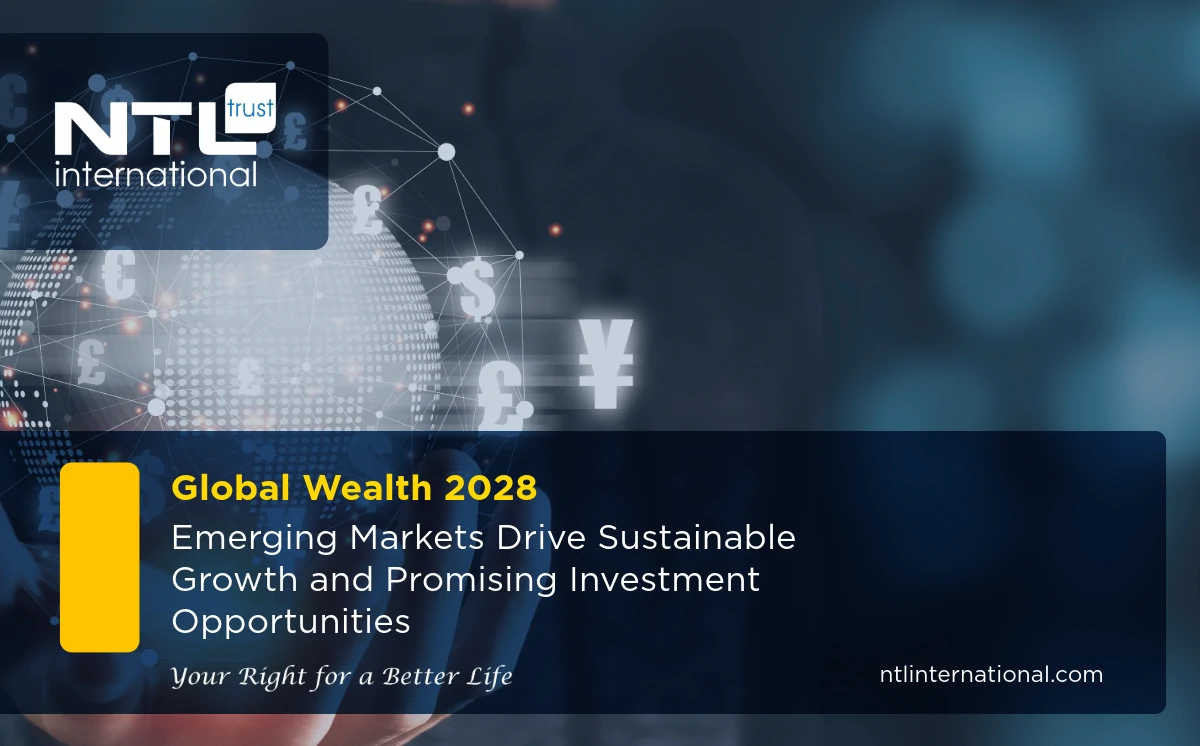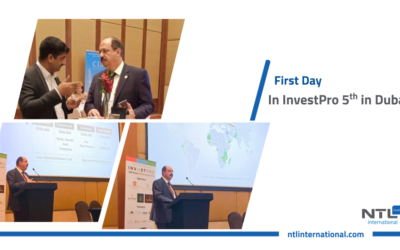
As the global economy takes shape, investors are looking ahead for growth opportunities in the world of wealth.
Our report provides exclusive insights into global wealth projections for 2028, highlighting key trends and investment opportunities worth considering. Based on precise data and expert analysis, this article reveals figures and percentages that signal a promising future for sustainable wealth growth, with a particular focus on the role of emerging markets as key drivers of this expansion.
What Are the Global Wealth Growth Projections for 2024?
Global wealth is expected to expand significantly between 2024 and 2028. Forecasts indicate that emerging economies will account for 30% of global wealth in 2024, rising to nearly 32% by 2028, reflecting the importance of these markets in driving economic development and wealth creation.
Additionally, the number of individuals with a net worth below $10.000 is expected to decline, signaling improved economic access and rising income levels. At the same time, the number of millionaires is projected to grow in 52 out of 56 analyzed markets, with growth rates exceeding 40% in some high-growth economies such as Taiwan, Türkiye, and Kazakhstan.
Global Wealth in 2028: Supporting Emerging Economies or Strengthening Advanced Markets?
1. Emerging Economies
Emerging markets play a crucial role in global wealth expansion. For instance, Taiwan is expected to see a 47% increase in the number of millionaires, driven by advancements in the transportation industry. Similarly, Türkiye will experience a 43% growth in its wealthy population, highlighting the growing demand for financial products and tailored investment solutions in these regions.
2. Advanced Economies
Strong economies such as the United States and Western Europe are expected to have more moderate growth rates than emerging markets. Notably, the United Kingdom may experience a decline in the number of wealthy individuals, reflecting an uneven recovery across advanced markets.
Key Strategies for Achieving Sustainable Global Wealth:
1. Diversifying Investments in Emerging Markets
Investors should consider diversifying their portfolios to include emerging markets to achieve long-term growth. The rapid economic expansion in regions such as Asia-Pacific, Latin America, and parts of the Middle East presents exceptional opportunities for high returns, though risk management remains essential.
2. Wealth Transfer Strategies
The importance of effective wealth transfer planning is increasing, with approximately $83 trillion expected to be passed down globally over the next two decades. Inheritance laws and tax regulations are becoming crucial factors in wealth preservation across generations.
3. Technology & Innovation as Growth Drivers
Industries such as artificial intelligence, green energy, and biotechnology are reshaping global wealth patterns. Wealth managers should prioritize investments in these sectors, particularly in Taiwan and South Korea, where technological innovation is driving substantial economic growth.
4. Inflation & Currency Volatility
With inflation and currency fluctuations continuing to impact wealth growth, diversification across asset classes and currencies will be key. While countries like Turkey and Brazil show high growth rates, careful assessment of local currency risks is essential to optimizing returns.
Final Thoughts
Sustainable wealth growth is not solely about increasing financial assets; it requires a balanced strategy that accounts for emerging opportunities, geopolitical shifts, and the evolving needs of high-net-worth individuals and families.
We encourage our clients to adopt a proactive approach and leverage the insights provided in this report to navigate the complexities of global wealth trends by focusing on high-potential regions.
At NTL, our goal is to help our clients achieve financial security, preserve their wealth, and manage it effectively.
Grenada Government Simplifies Citizenship Procedures
In an effort to simplify the process of obtaining citizenship, the Government of Grenada, one of the Caribbean islands, is seeking to make the application and follow-up process in two phases instead of one stage only. Therefore, the new procedure will significantly reduce the time taken for transactions.
What is the Turkish Portal (your key Turkey)?
It is an online portal for foreigners, launched by the Turkish Ministry of Environment and Urban Development. It is an easier way to obtain all information and consultations related to Real Estate, Real Estate Registration, and how to obtain Turkish citizenship by investing for foreigners wishing to buy real estate or/and obtain citizenship in Turkey.
NTL AT RAK International Exhibition for SME 2019
In response to a special invitation, NTL company represented by Mr. Imad Elbitar, Nationalities and Citizenship Expert, attended the opening of the (Ras Al Khaimah) RAK International Exhibition for Small and Medium Enterprises SME, followed by a luncheon that brought together many investors, diplomats and managers of participating companies from around the world.
First Day In InvestPro 5th – Dubai
InvestPro conference takes place in Dubai – UAE, at Oberoi Hotel for two days from 13 to 14 November.
NTL, represented by Mr. Imad Elbitar, Nationality and Citizenship Expert, and Regional Director for the Middle East and Turkey, participates in the conference.
Comparison Between Turkey and Caribbean CBI
The second citizenship is considered the pass card to secure a better future for the investor and his family. In this article, we put together a comparison between the most required passports and their advantages.





